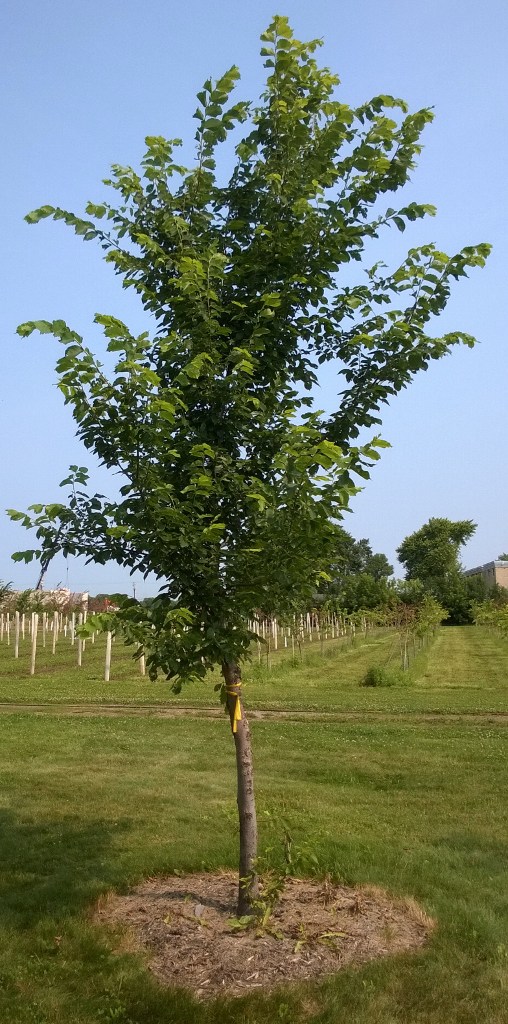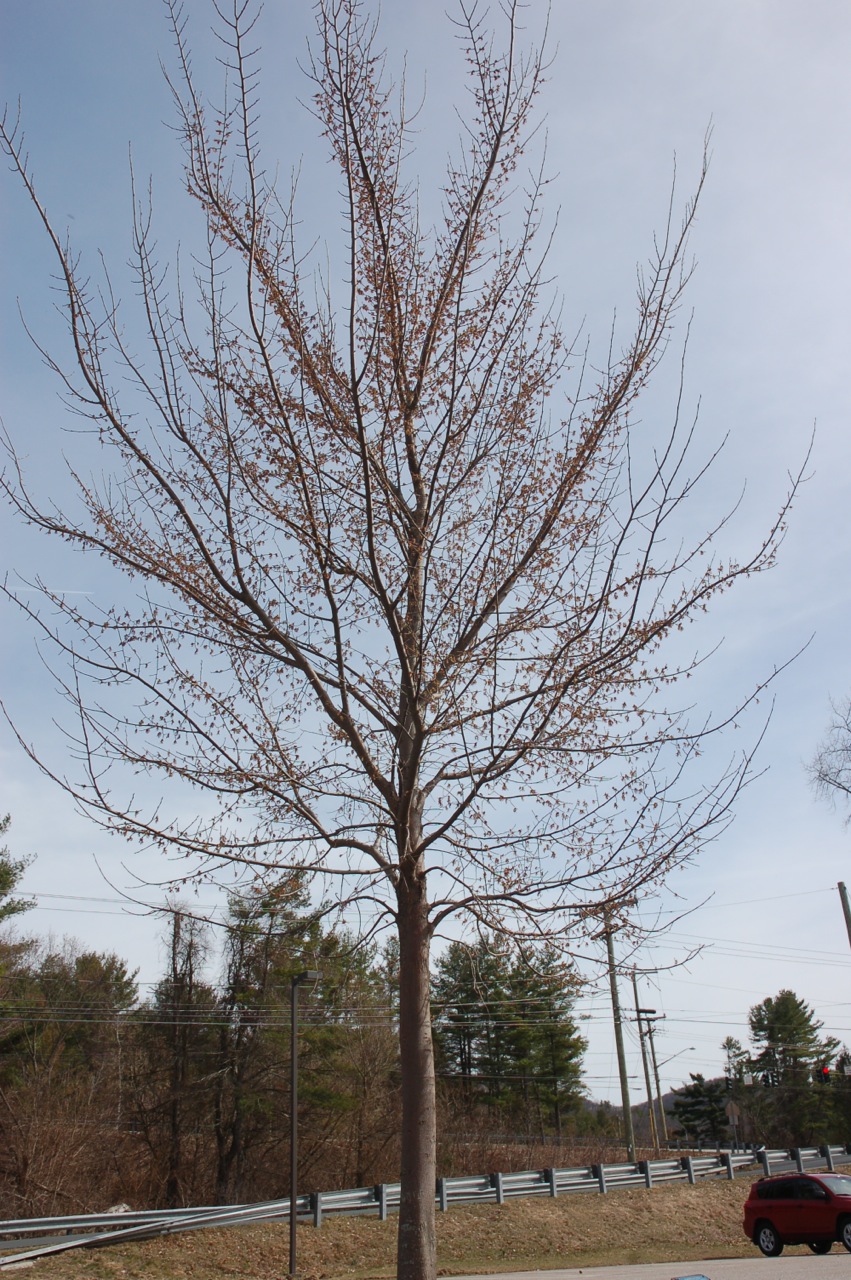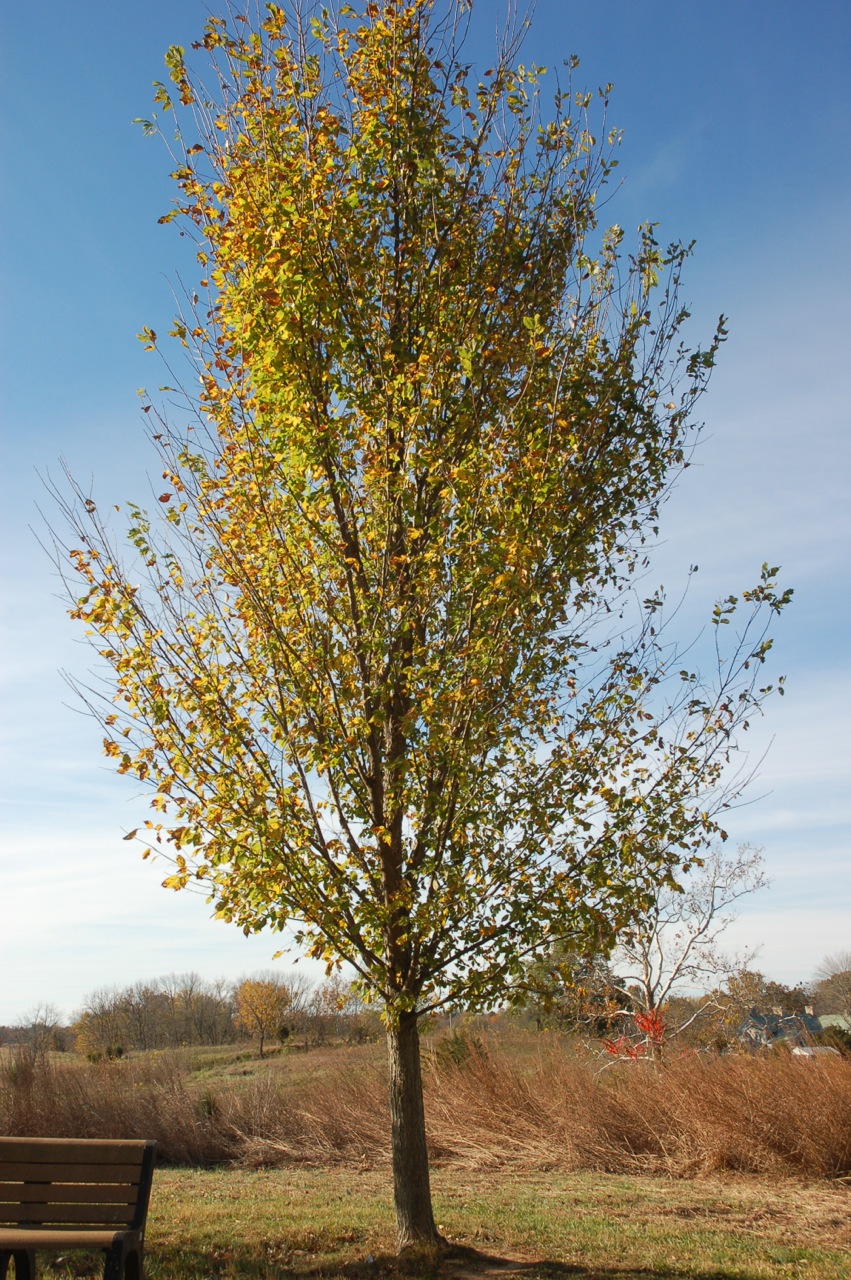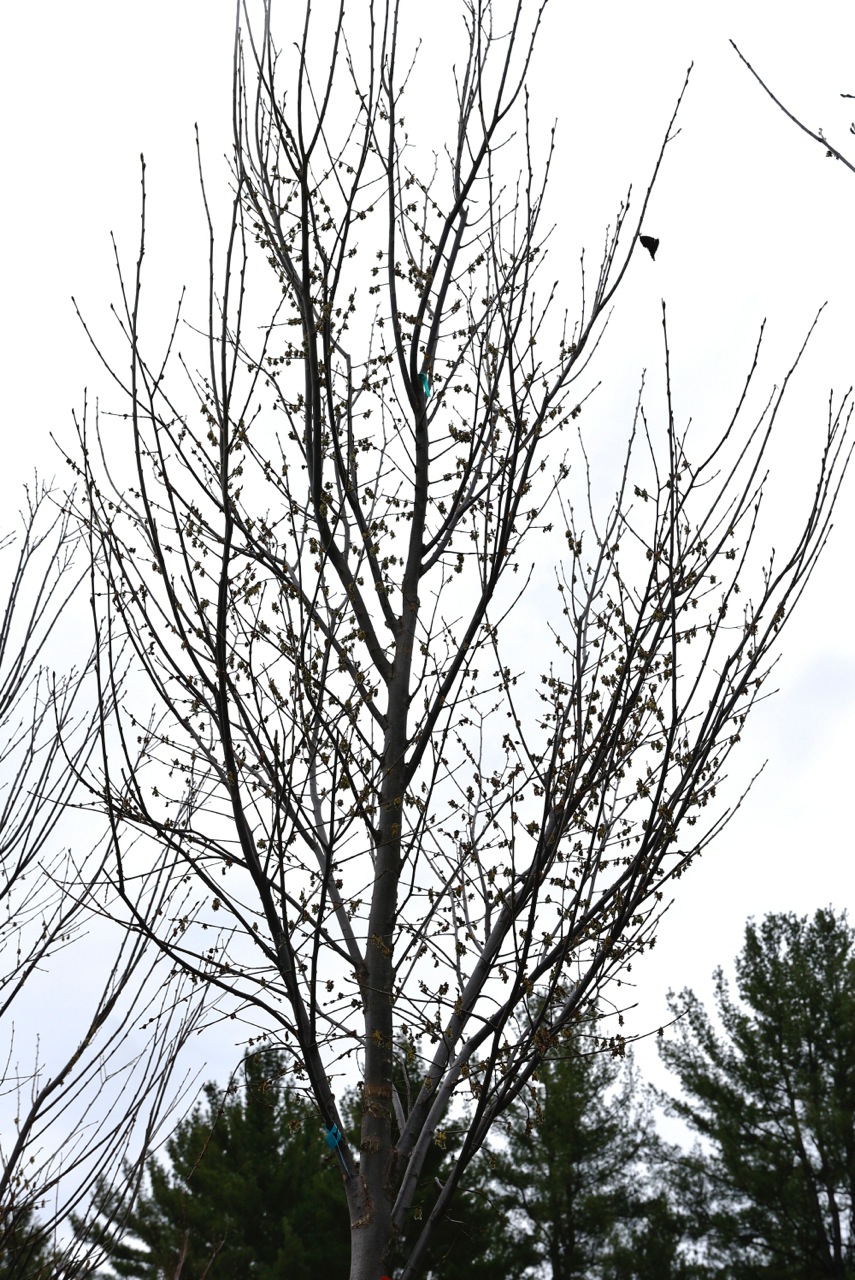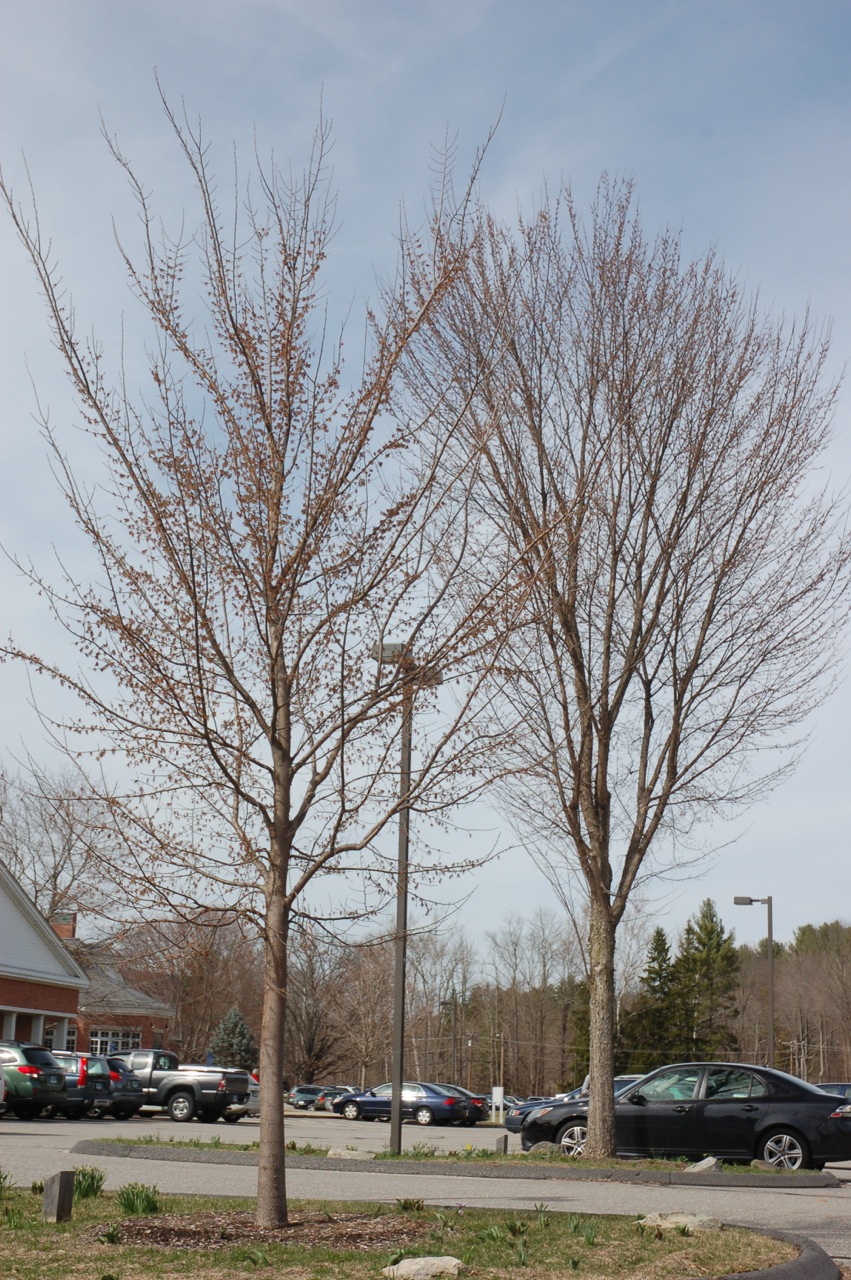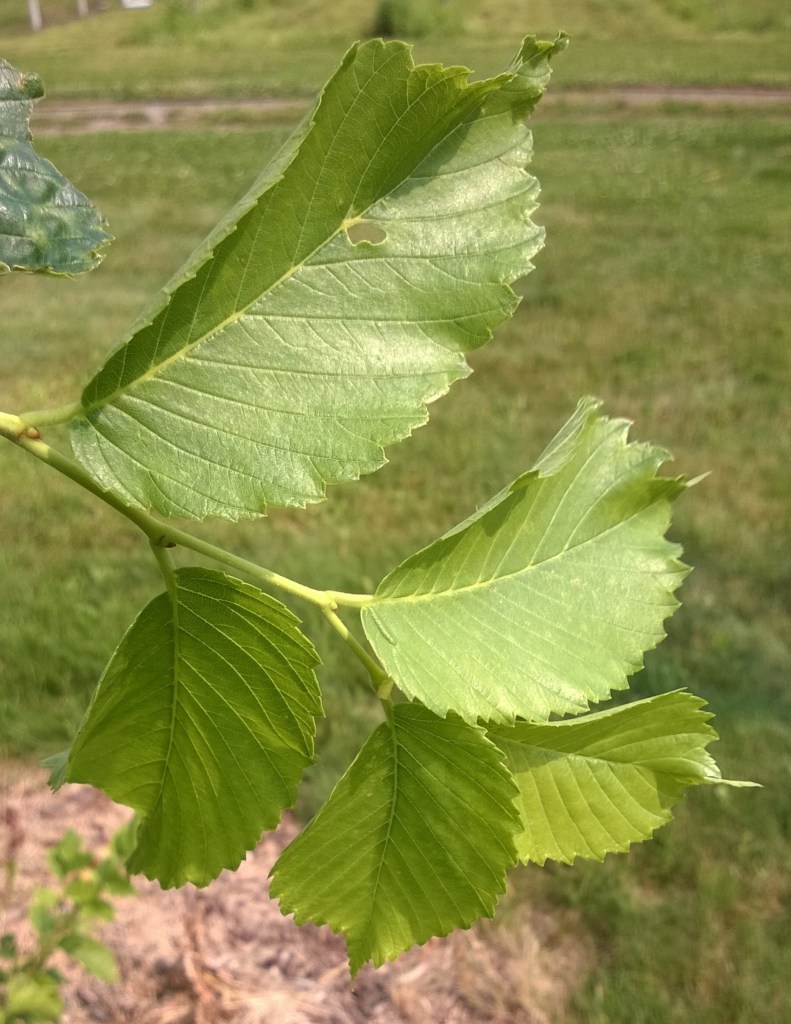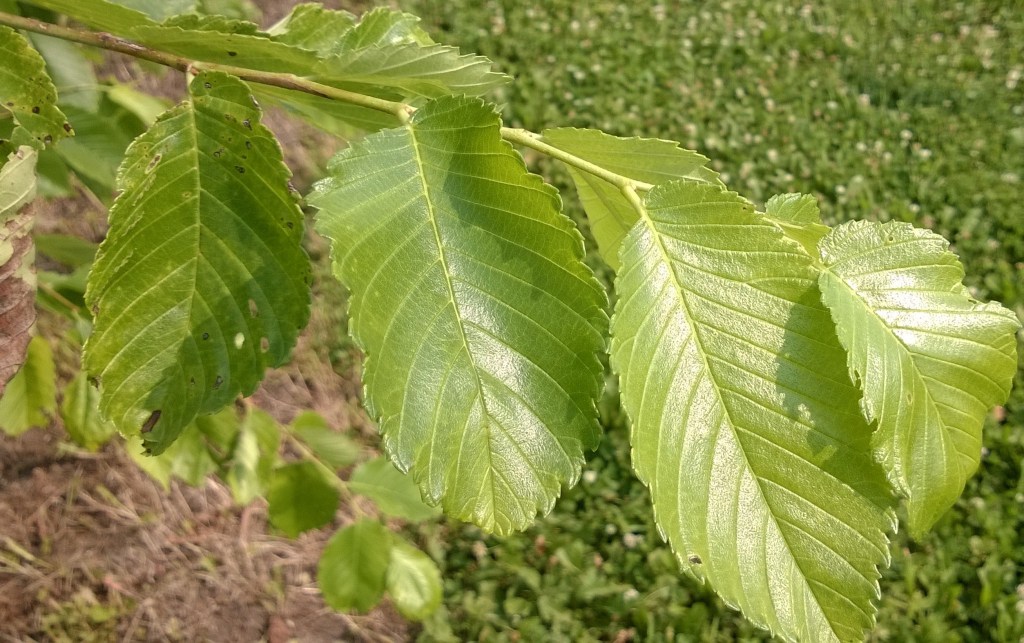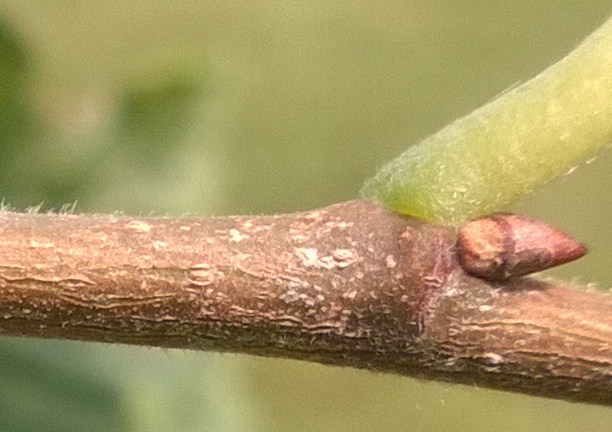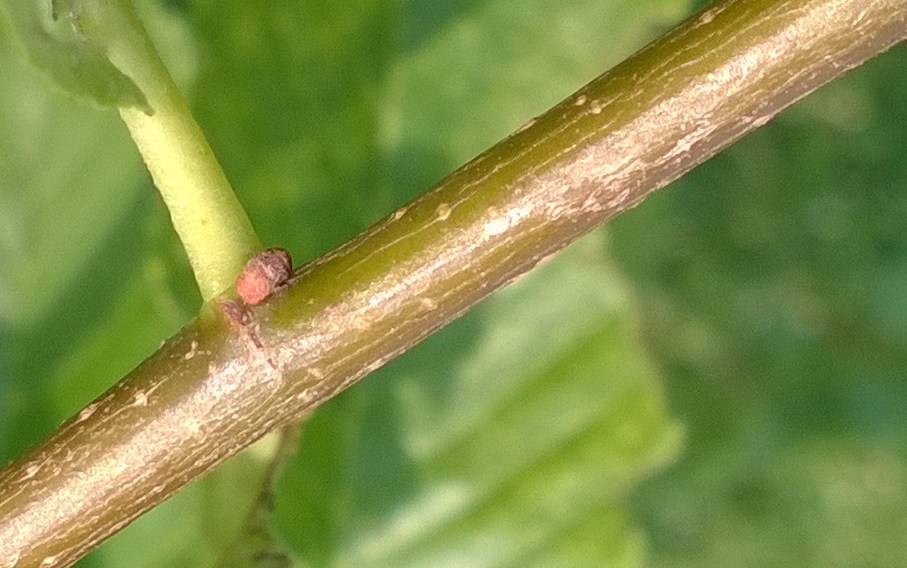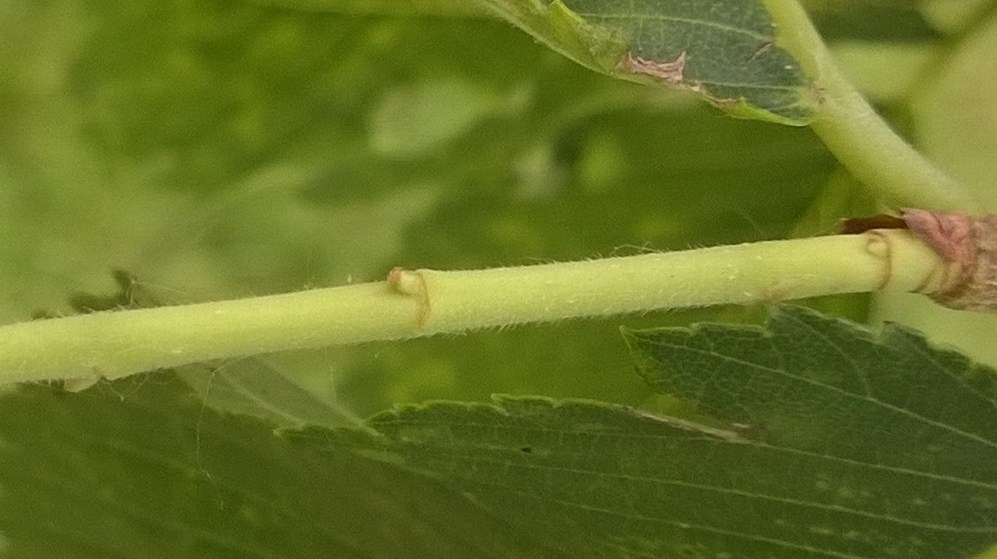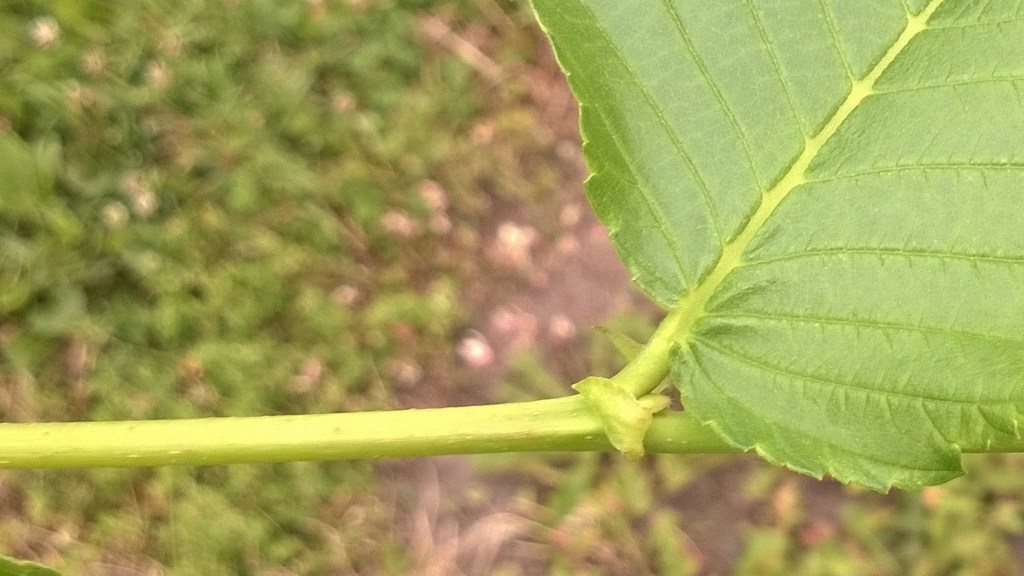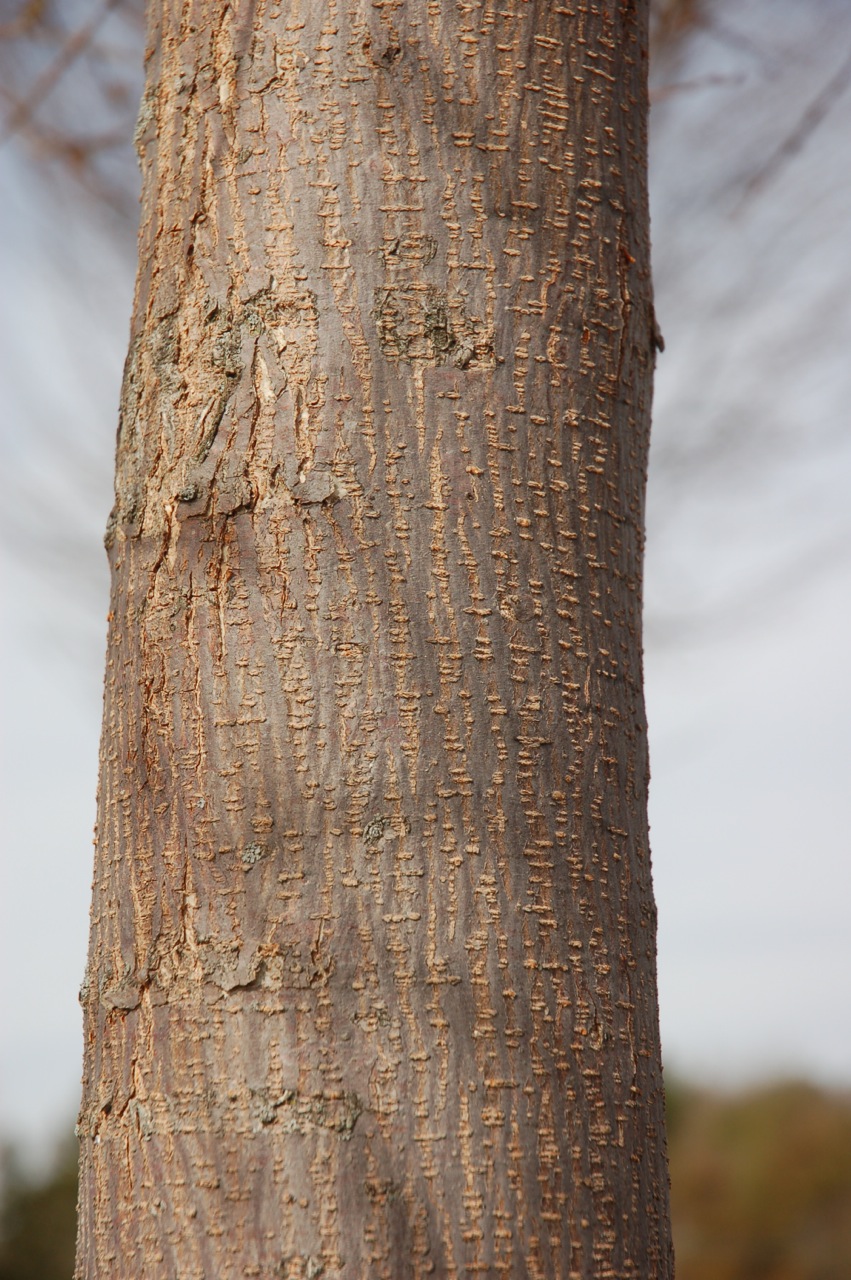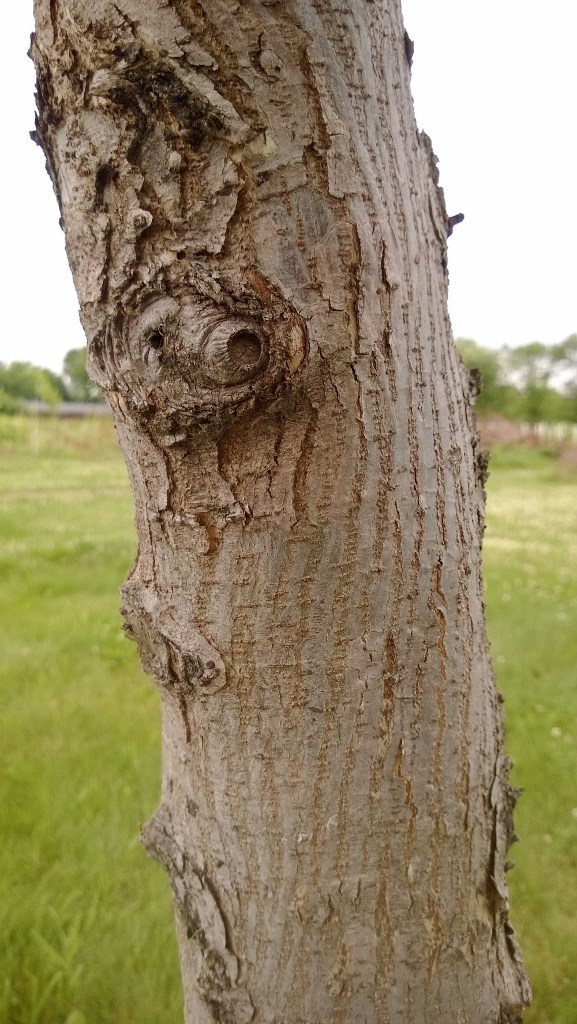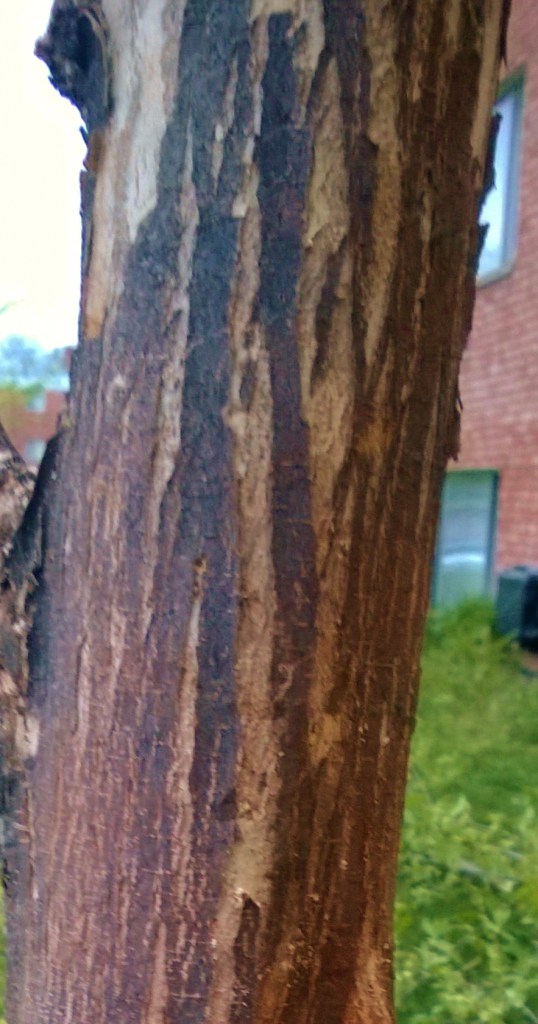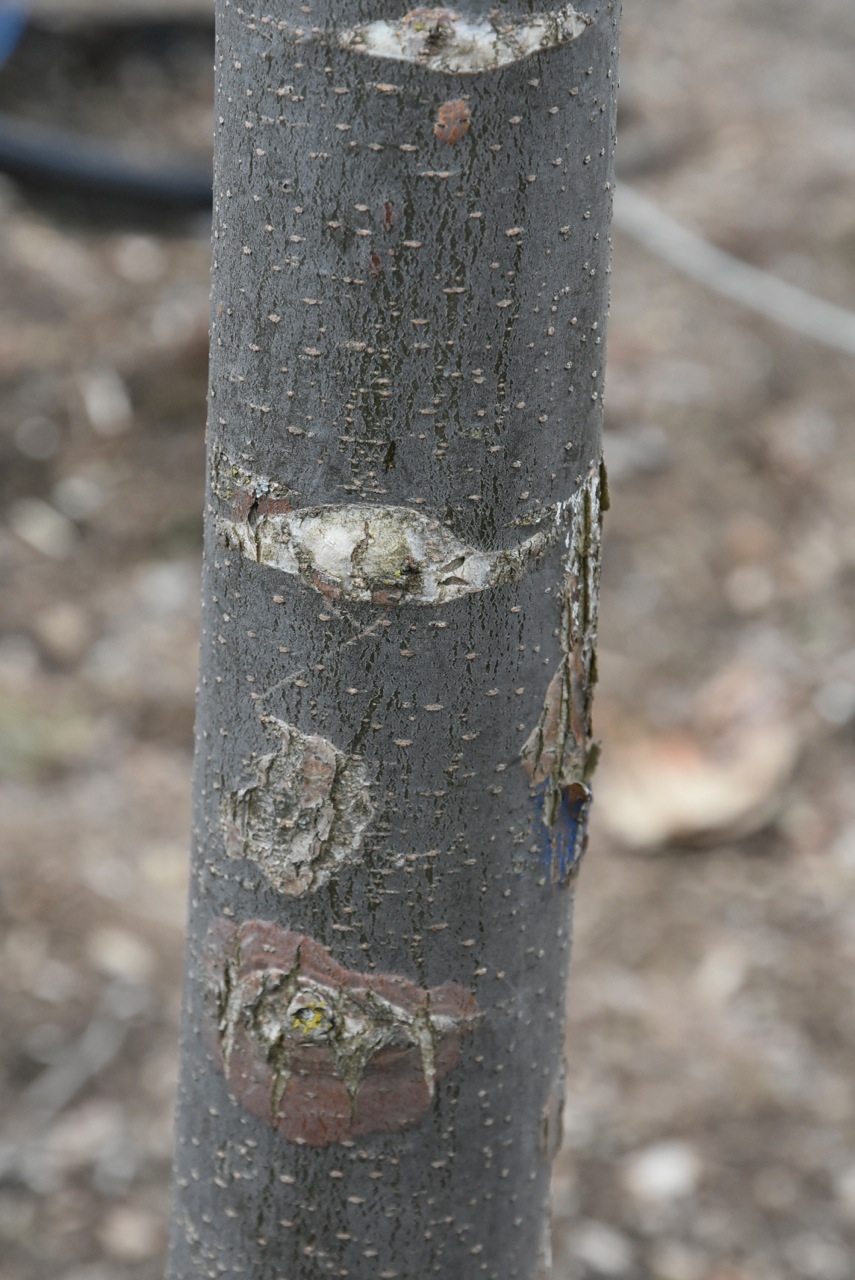Learning how to differentiate between popular varieties is a key skill in maintaining an accurate tree inventory and addressing disease issues.
Jefferson American Elm vs. Princeton American Elm
Princeton is perhaps one of the most widely distributed American elm variety in current use, Jefferson is more recent release from the USDA National Arboretum that is gaining a list of supporters due to its superior form and maintenance requirements.
Form & Growth Habit
Both trees have a relatively upright growth habit, however the branch attachment in Princeton is much more acute and results in greater incidence of branch inclusion
| Jefferson American Elm | Princeton American Elm |
|---|---|
|
Photo © Tom Zetterstrom |
Photos © Tom Zetterstrom |
Comparison of maturing form in Jefferson (left) and Princeton (right). Photo © Tom Zetterstrom
Leaf Characteristics
Leaf size, texture or color is not enough to differentiate between American elms.
| Jefferson American Elm | Princeton American Elm |
|---|---|
Twigs & Branches – New Growth
The easiest way to tell Princeton from Jefferson is to closely examine the texture of the new growth. Princeton exhibits glabrous (smooth) new growth throughout the canopy while Jefferson has pubescent (fuzzy) new growth in the current and previous year’s new growth.
Previous Year’s Growth
| Jefferson Two-Year Old Branches (note fuzz) | Princeton Two-Year Old Branches (no fuzz) |
|---|---|
Current Year’s New Growth
| Jefferson Current Year’s New Growth (note fuzz) | Princeton Current Year’s New Growth (no fuzz) |
|---|---|
Bark & Stems
Like the leaves, bark is generally not the best feature to use when trying to differentiate between American elm selections. Nonetheless, maturing bark on Jefferson elm may appear more finely striated than that on Princeton elm, creating a more finely dissected appearance. Maturing Jefferson bark may also appear more grey/green while Princeton may appear more red/brown.
| Jefferson Bark | Princeton Bark |
|---|---|
|
Maturing Bark Juvenile Bark
|
Maturing Bark Juvenile Bark Photo © Tom Zetterstrom |
Coming Soon…
- Valley Forge American Elm vs. Princeton American Elm
- Princeton American Elm vs. New Harmony American Elm
- Valley Forge American Elm vs. New Harmony American Elm
- Accolade Elm vs. Princeton Elm.
- Accolade Elm vs. Triumph Elm
